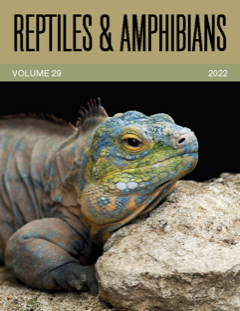The amphibians and reptiles of Naval Station Guantanamo Bay, Cuba: An updated checklist and notes on conservation status and occurrence
DOI:
https://doi.org/10.17161/randa.v29i1.18527Keywords:
species list, GTMO, Guantanamo Bay history, herpetofauna, natural history, conservation statusAbstract
Naval Station Guantanamo Bay, a U.S. Navy base established in 1903 and located in southeastern Cuba, contains a rich herpetofauna. However, the last species list for this locality was published over 20 years ago. Since then, taxonomic adjustments, new range maps for some species, and new species discoveries on the base necessitate an updated and complete species list. Within the boundaries of the Naval Station, six species of amphibians (all anurans) and 39 species of reptiles (one amphisbaenid, 24 lizards, eight snakes, one semi-aquatic freshwater turtle, one crocodilian, and four sea turtles) have been documented. Nearly 30% of these species are of conservation concern, classified as near threatened or worse by the IUCN and/or the Cuban Red Book of Vertebrates. The base actively protects two iconic species, Cyclura nubila (Cuban Iguana) and Chilabothrus angulifer (Cuban Boa), as well as nesting sea turtles, and contains the second known population of the rare Leiocephalus onaneyi (Guantanamo Striped Curlytail). Crocodylus acutus may be extirpated from the base but the history of this species in eastern Cuba contains inconsistencies. The United States Navy is legally obligated to protect the fauna and flora contained within the base’s boundaries with special attention to listed species.
Downloads
Published
Issue
Section
License
Copyright (c) 2022 Kristin Bakkegard

This work is licensed under a Creative Commons Attribution-NonCommercial 4.0 International License.
Copyright is held by the authors. Articles in R&A are made available under a Creative Commons Attribution-NonCommercial 4.0 International license.

